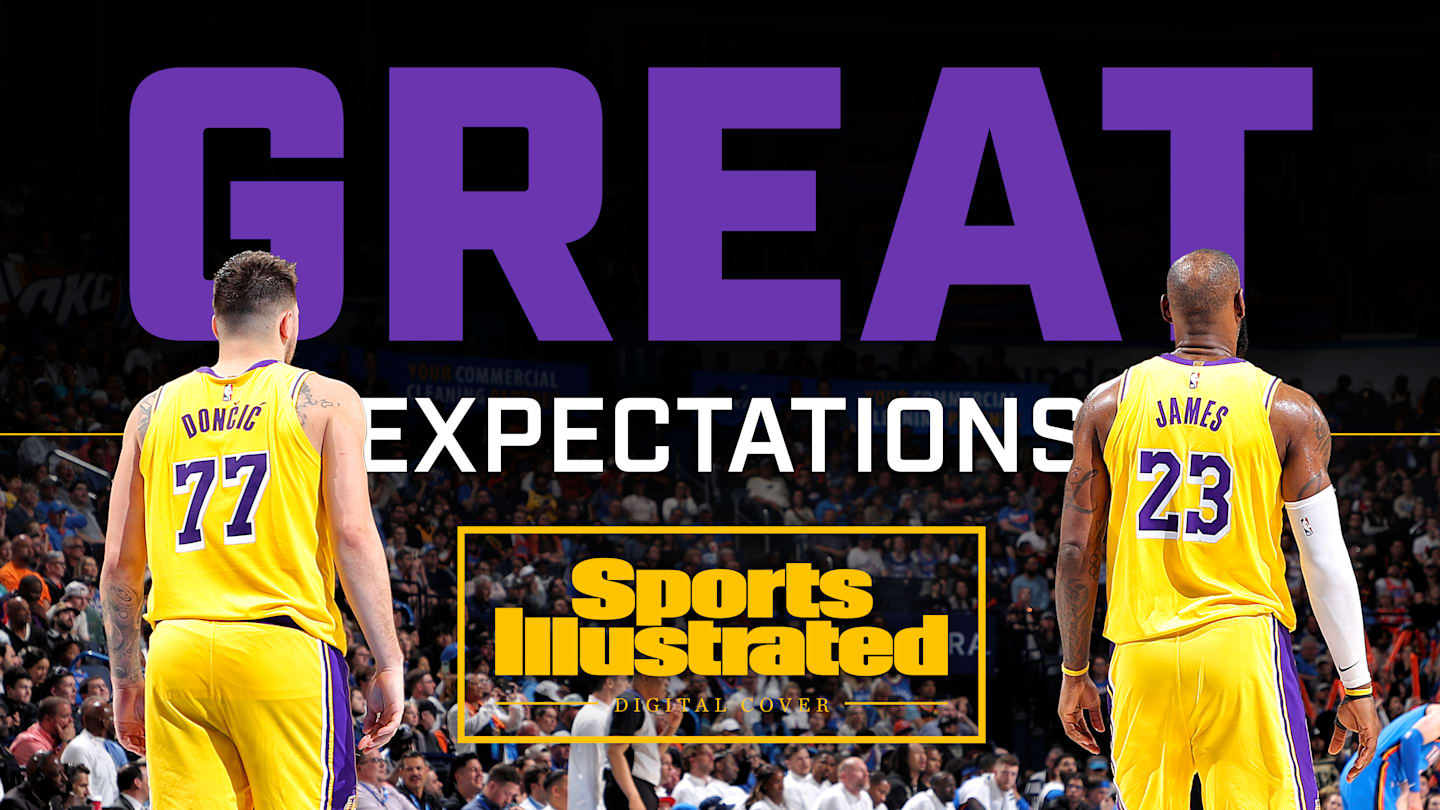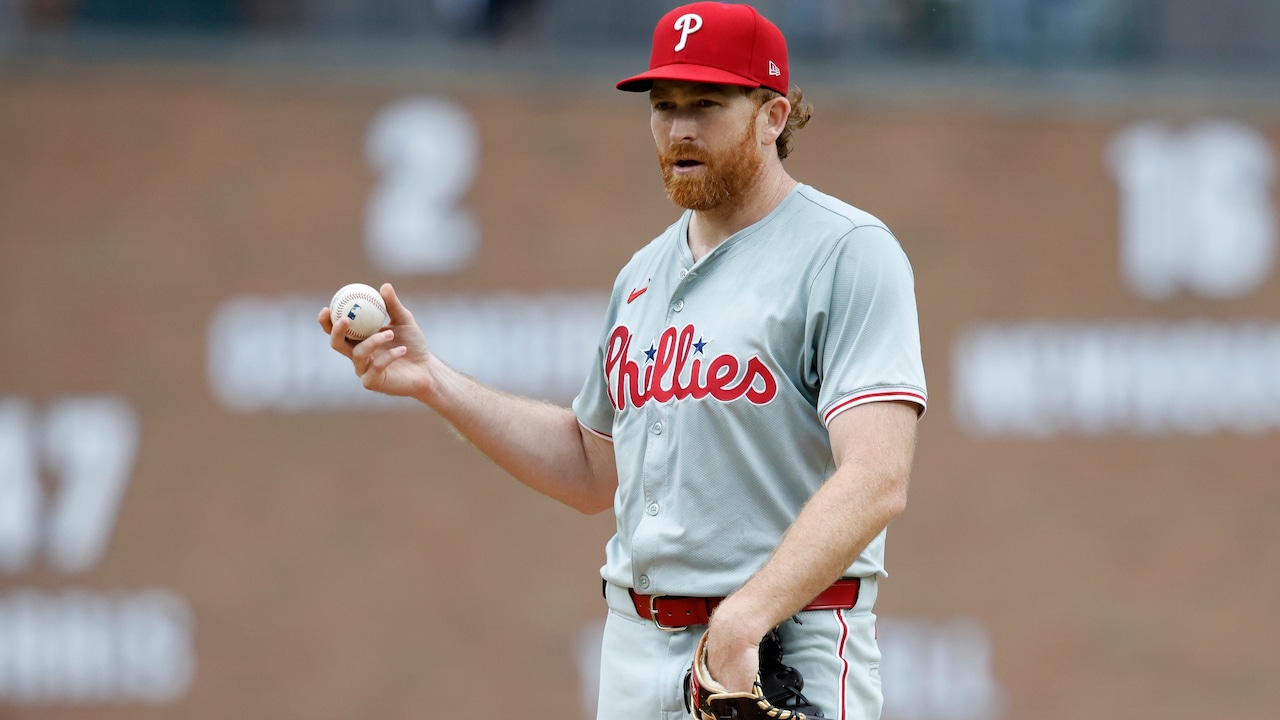Here’s the story, at least as Rui Hachimura tells it. When JJ Redick was hired as Los Angeles Lakers coach last June, he had a goal: 50 wins. Third seed. It seemed improbable. Back then, expectations, at least externally, were modest. Los Angeles won 47 games the season before, good enough to make the playoffs, not enough to win more than one game in the first round. Oddsmakers pegged this season’s win total around 44. LeBron James was pushing 40, Anthony Davis had a history of injuries and the supporting cast that helped push the Lakers to the conference finals in 2023 had flopped a year later. Redick looked the part of head coach, a well-spoken, well-dressed, well-coiffed ex-player turned podcaster, but few expected a new coach—L.A.’s third in two years—to make a measurable difference.
Yet last week, inside a water-soaked locker room, the Lakers proved Redick prescient: 50 wins. Third seed. “It’s a cool moment to share,” Redick said. “But we want more.”
Even in a season with so many unlikely stories—the Cleveland Cavaliers’ surge to the top of the Eastern Conference standings, the Oklahoma City Thunder running away with the West, the Houston Rockets’ leap from a lottery team to the No. 2 seed—the Lakers have been a startling one. The 50 wins are the most since the 2019–20 season. L.A.’s winning percentage (61%) is second-best since the lockout-shortened ’11–12 campaign. The Lakers won 29 of their last 44 games, finished 31–10 at home and in the final month beat Denver, Memphis, Oklahoma City and Houston, twice.
In the NBA, continuity can lead to success. The Lakers didn’t have it. L.A. nuked its roster at midseason. The trade for Luka Doncic in February was widely praised. The Lakers paid a steep price—Davis, Max Christie—but Doncic, a 26-year-old All-NBA guard, would make them better.

Eventually. At Doncic’s introductory news conference, the focus was less about how Doncic could impact the team this season than in the years to come. “We know that our roster has continued work to do to be complete,” Lakers general manager Rob Pelinka said then. “We’re going to build a roster that fits JJ Redick’s basketball philosophy.”
Turns out, they had one. The Lakers went 18–10 with Doncic in the lineup. Redick, who played 13 games alongside Doncic during Redick’s final NBA season, quickly incorporated him into the offense. Austin Reaves upped his game, averaging 22.2 points on 48.3% shooting (including 40.6% from three) after the All-Star break. An aggressive, switching defense led by Hachimura, Jarred Vanderbilt and Dorian Finney-Smith helped hold opponents to 45.7% shooting in the second half of the season—good for seventh best in the NBA.
On Saturday, when the Lakers open up their first-round series against the Minnesota Timberwolves, they will find out how much further they can take it. Minnesota is battle-tested, armed with its own superstar in Anthony Edwards. But the Wolves are weaker than the conference finals team from a year ago. After that could come a semifinals matchup with Houston, which L.A. just clobbered. After that, perhaps, Oklahoma City, which the Lakers drilled on April 6 and two days later led by a point in the fourth quarter before Doncic was ejected.
Months earlier, Los Angeles’s dream was a playoff appearance. Now, it’s a championship. “That’s gotta be [the] only goal, and that’s our only goal,” Doncic said. “I think we have the team to do it. When everybody’s locked in, you know, we’re a hard team to beat.”
For Luka Doncic, the feeling had to have been familiar. In Oklahoma City for a nationally televised game, Lu Dort, Oklahoma City’s bruising wing defender, crouched in front of him. Last year, with the Dallas Mavericks, Doncic floated off screens set by Dereck Lively II and P.J. Washington. This year, it’s Hachimura and Jaxson Hayes. The results were the same: A big switches onto Doncic and pays the price for it. It cost the Thunder a second-round series last season. Last week, after a 30-point Doncic outburst, it cost them a game.
With Doncic, how the Lakers played changed. Gone was Davis, a low post presence on offense, an anchor on defense. Doncic’s arrival, coupled with the aborted trade for Charlotte Hornets center Mark Williams, who would have filled the Davis-sized hole in the middle, forced Redick to play more small ball. The result, opposing coaches say, is an offense as simple as it’s been effective.
With Los Angeles, Doncic has not skipped a beat. His scoring numbers with the Lakers (28.2 points per game) are nearly identical to his output with the Mavericks (28.1). His field goal percentage is a tick down. His three-point percentage is a tick up. Other numbers—rebounds, assists, steals—have been largely the same.

The Lakers, rivals say, have not tried to reinvent the wheel. “It’s the Dallas playbook,” a veteran assistant coach says. They run center screens with Doncic and let him work. Oklahoma City owns the NBA’s best defensive rating. The Thunder are loaded with wing defenders. But the Lakers’ high screens routinely freed Doncic from perimeter players with a shot at containing him (Dort, Alex Caruso, Cason Wallace) and left him to operate in space against ones (Isaiah Hartenstein, Chet Holmgren) with none.
“They keep it super f—ing simple,” the coach says. “There’s no trickery to what they’re doing. They’re running pick-and-rolls with Luka and isolating with him. They probably run more isos than any team in the league. They don’t hide what they are trying to do.”
Indeed. After Oklahoma City squeezed out of a split of a two-game homestand against the Lakers, Thunder coach Mark Daigneault noted that among the challenges of beating L.A. is that they don’t beat themselves. “If your help is, like, leaning in the wrong direction,” said Daigneault, “they’re going to make the right play, like nine out of 10 times.”
To Redick, that’s the highest compliment. Redick had philosophies when he took over the team last spring. Run more offense through Davis. Shoot more corner threes. Shore up a defense that finished last season ranked in the bottom half of the league.
The foundation of that philosophy, Redick believed, was organization. Everyone needed to be on the same page. From Davis to Hayes. LeBron to Bronny James. Privately, players had expressed frustration over uncertainty over their roles last season, sources say.
Redick aimed to change that. At a preseason dinner, Redick reportedly distributed T-shirts with “DETAILS” written across the center. Redick, James said early in the season, was “setting the standard.” Added James, “It’s not about who is playing, it’s about what we want to do every night. We want to play the same way every single night.”

Defensively, too, where L.A. has a similarly simple philosophy. “They switch everything,” the assistant says. The return of Vanderbilt, who missed the second half of last season with a foot injury, has given the Lakers a versatile, springy defender. The midseason acquisition of Finney-Smith has added another. James, an elite defender when he was in his prime, has appeared energized on that end.
“As much as this group’s been through,” Reaves said, “every time we hit any type of adversity, we bounce back, and that’s all you can ask in a group.”
From mid-January to early March the Lakers owned the NBA’s top defensive rating. They have leveled off since then—L.A. was 19th in defensive rating in April—but held Houston to 97 points in a late-March win and Oklahoma City to 99 a week later. They give up a lot of threes (bottom third in the league in threes allowed since the All-Star break) while protecting the paint (top-10 in points allowed), a strategy that has kept them in games long enough for Doncic and James to win them.
“I think they’re as tough as any team in the league personally,” says another NBA assistant. “I know people kind of s— on them a little bit and then when they win a couple games, everybody thinks they’re awesome. But I think they’re really tough. And when you get to the playoffs, toughness matters.”
In December, LeBron James acknowledged the obvious: The Lakers were not a championship team. The first two months of the season were a mixed bag. L.A. was a middle-of-the-pack offensive team with a defense buried in the bottom third. On Dec. 29, the Lakers pulled the plug on the D’Angelo Russell experiment, shipping Russell to the Brooklyn Nets for Finney-Smith.
Said James, “Right now, I think we’re a very good team. I think we have a chance to compete with anybody in the league. Are we at a championship level? Can we win a championship right now? No, I don’t think so. But that’s good because we have so much room for improvement.”

Have they improved enough? In Doncic and James, the Lakers have two of the NBA’s best closers. Reaves has emerged as a viable third star. Gabe Vincent, who missed most of last season due to injury, has been a reliable three-point shooter off the bench. The team is 29–14 in games Finney-Smith has appeared in since joining the Lakers and are +268 (+6.2 average) in plus-minus when he is on the floor.
“Playoff time is all about executing and paying attention to the details,” Reaves said. “You can win by the smallest margin, or you can lose by a couple mess-ups. So, you have to be sharp every single possession.”
In February, a Lakers run to the NBA Finals felt impossible. In April, the odds have significantly improved. Addressing reporters last week, Reaves said he felt like this season has been five wrapped into one. “But then again,” said Reaves, “it feels like it just started.” For Los Angeles, it just might have.

